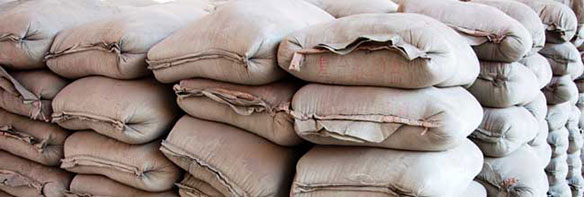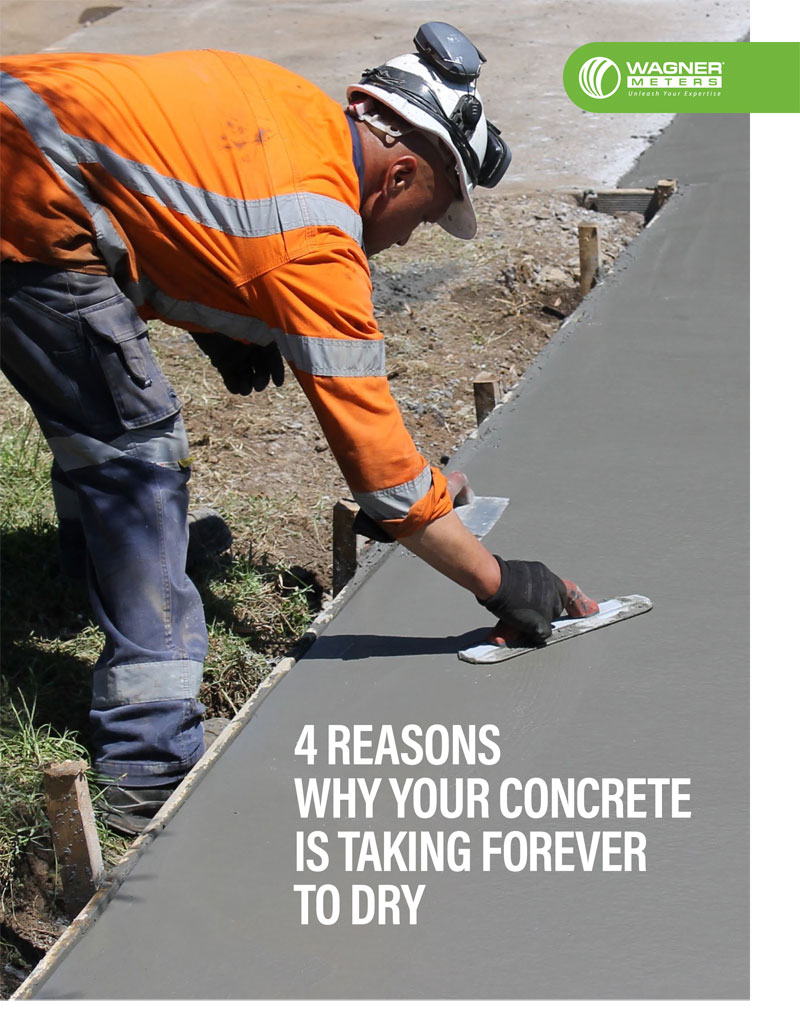Concrete vs. Cement Part II

The concrete slab has been poured. Cement is chemically reacting with water, a process called hydration, and the resulting paste is bonding with aggregate in the mixture. Done well, concrete production goes a long way towards resolving many potential concrete slab moisture problems.
Water’s Okay… to a Point
 The presence of water in concrete is as natural as the presence of kids in a playground. In fact, moisture remains in concrete slabs even after reaching their dry state. Concrete continues to exude water vapor in low relative humidity (RH) ambient conditions, and absorb it when ambient RH is high. Moisture migration will be an ongoing reality until the slab is sealed. It’s after a slab is sealed that moisture mitigation can become problematic.
The presence of water in concrete is as natural as the presence of kids in a playground. In fact, moisture remains in concrete slabs even after reaching their dry state. Concrete continues to exude water vapor in low relative humidity (RH) ambient conditions, and absorb it when ambient RH is high. Moisture migration will be an ongoing reality until the slab is sealed. It’s after a slab is sealed that moisture mitigation can become problematic.
However, one must abandon the idea that water in concrete is inherently bad; its presence does not necessarily indicate an onset of concrete slab moisture problems.
Moisture Measurement
Water is nature’s liquid influence on slabs. Concrete slab moisture problems result when the moisture conditions in the slab have not been measured accurately before the finish or flooring application is installed, or when moisture is allowed to enter a finished slab through groundwater wicking or seepage from another source.
Fortunately, concrete moisture measurement is a matter of simple metric assessment. Technology inspired Wagner Meters to develop their Rapid RH®: a cost-effective and reliable way to accurately measure slab moisture content during concrete installation. The Rapid RH® measures the RH of moisture at all levels of a slab. Installers place in situ probes (containing Smart Sensors) into the slab. Within an hour, contractors can deploy moisture measurement at 40 percent depth of the slab to within a workable measurement for finishes and flooring. (Note that while ASTM F2170 requires 24 hours equilibration for documentation, the accuracy of the Rapid RH® allows decisions to be made in a more timely manner for cost and materials optimization.) This ensures quality control.
The Preemption of “Hurry up!”
Construction is a tightly-timed and rigorously-budgeted endeavor. Time is seen as the ultimately unjustifiable building expense. However, Rapid RH® is one tool which offers options. If a Rapid RH® moisture measurement shows uneven levels of concrete readiness, installers can dehumidify the wetter sections of the slab surface or they can apply concrete surface membranes. However, savvy building professionals can preempt those options in two ways. First, ensure proper mix specifications, starting with .5 w/c ratio and a LIGHTLY troweled surface. Second, get the building enclosed as quickly as possible to allow the concrete more consistent conditions.
If concrete slab moisture problems represent impending doom to successful installation, Rapid RH® moisture measurement represents their ability to identify those problems, before they happen.
Tune to Part I for more on the Rapid RH® relative humidity concrete moisture testing system.
Are you looking for a concrete calculator to estimate how many cubic feet and cubic yards of concrete you will need to fill your space? Try out our concrete calculator.

Free Download – 4 Reasons Why Your Concrete Is Taking Forever to Dry
Jason has 20+ years’ experience in sales and sales management in a spectrum of industries and has successfully launched a variety of products to the market, including the original Rapid RH® concrete moisture tests. He currently works with Wagner Meters as our Rapid RH® product sales manager.
Related Posts via Taxonomies
Last updated on January 26th, 2022



